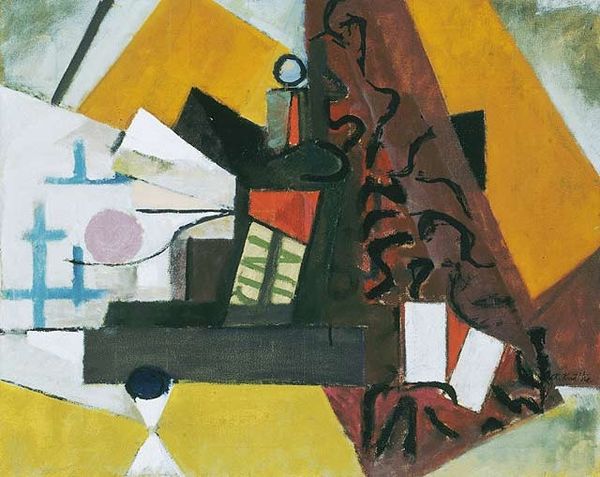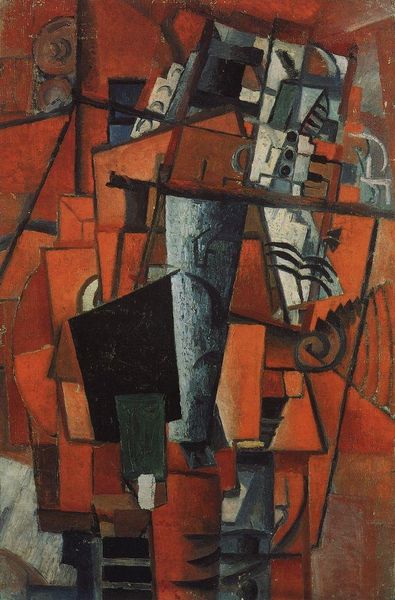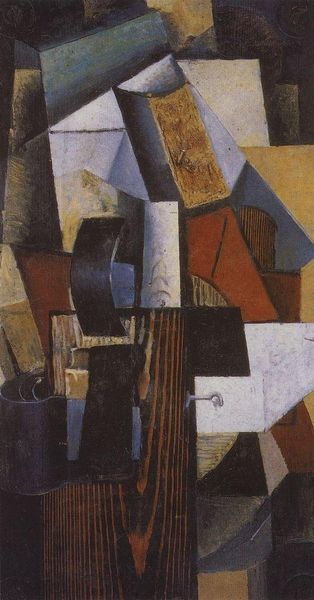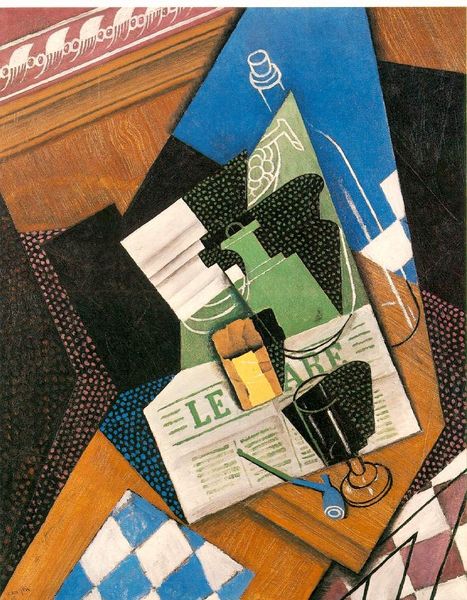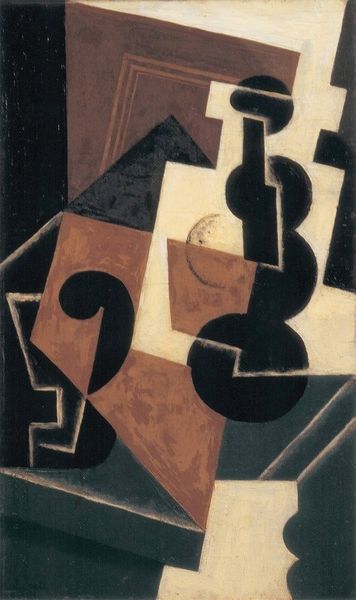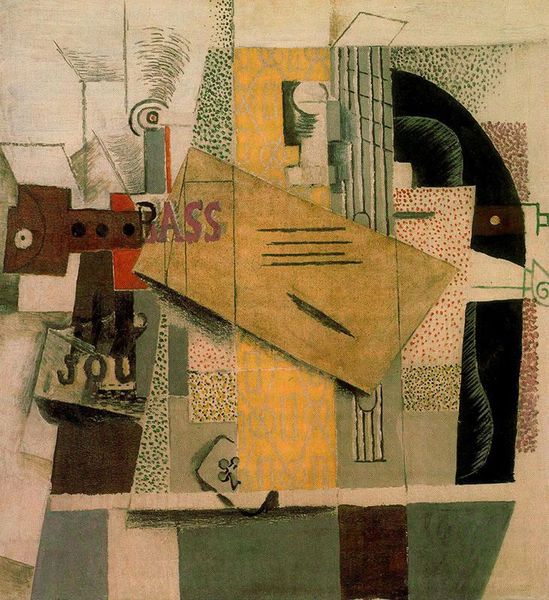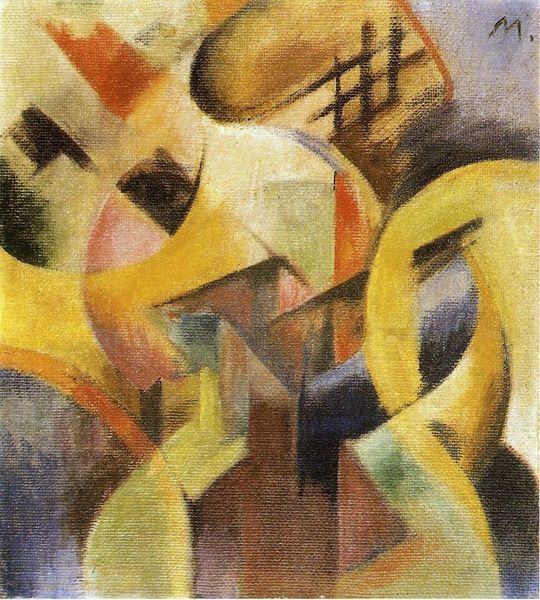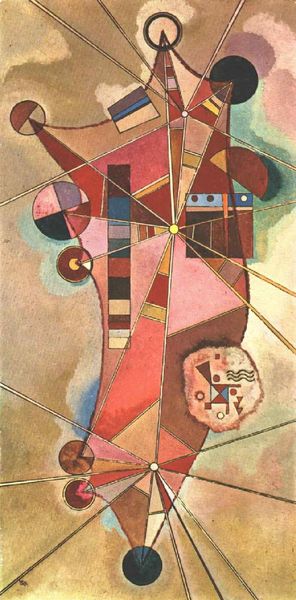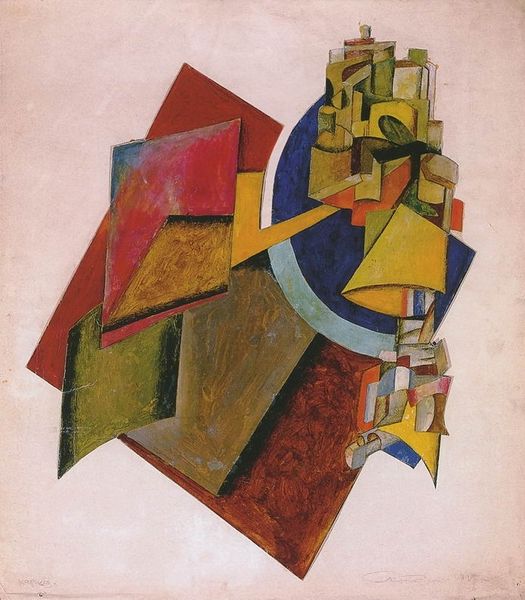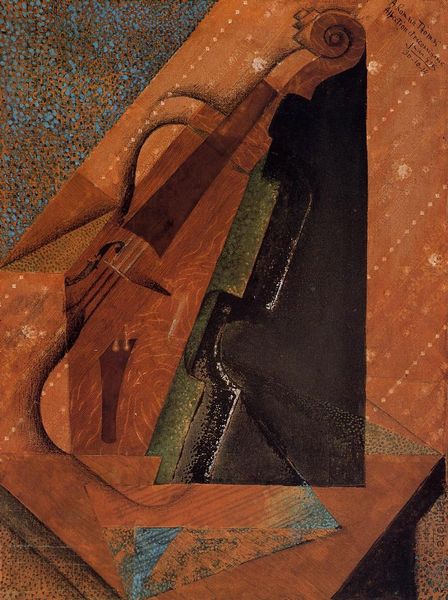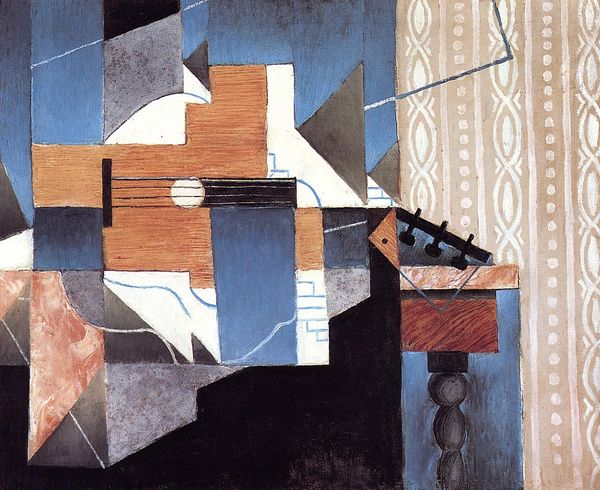
painting
#
cubism
#
painting
#
geometric
#
line
Dimensions: 65 x 50 cm
Copyright: Public domain
Editor: Here we have Juan Gris' "Violin and Print" from 1913, rendered in oil on canvas. I’m struck by how fragmented the composition is, almost like shattered glass. How do you interpret this work in the context of its time? Curator: That fragmentation is key. Gris was deeply engaged with Cubism, a movement fundamentally questioning representation itself. Think about the societal upheaval in the early 20th century, the rapid industrialization and urbanization disrupting established orders. Cubism, in a way, mirrors that fracturing of experience, challenging singular perspectives. How might Gris be engaging with the role of art and its subjects against this backdrop of cultural transformation? Editor: So it’s not just about deconstructing the image, but also about reflecting a broader social and political breakdown? Curator: Precisely. And consider what's being deconstructed: a violin, a print – signifiers of bourgeois culture. Is Gris subtly critiquing that class's values and the traditional forms of artistic expression they championed? What message could that convey during a period rife with socialist and anarchist ideologies that are trying to push back on the elitism? Editor: It’s fascinating to consider that what initially seemed like a formal experiment might also be a subtle form of social commentary. It gives so much depth to the viewing experience. Curator: Exactly! Art isn't created in a vacuum, it reflects, distorts, and pushes against the currents of its time. Hopefully, viewing the painting with all its dimensions helps see it and society with greater complexity.
Comments
No comments
Be the first to comment and join the conversation on the ultimate creative platform.
